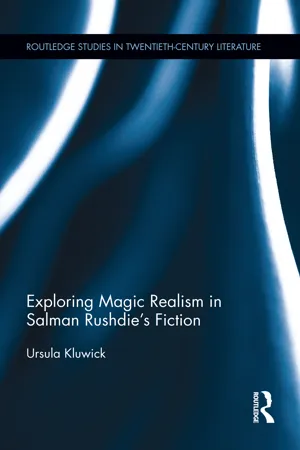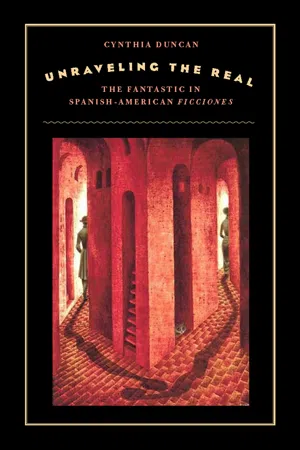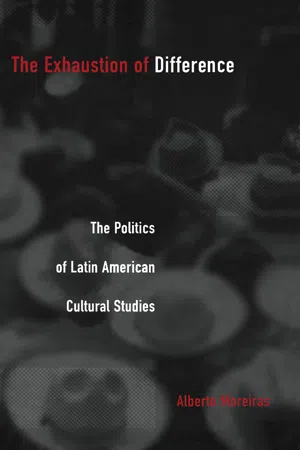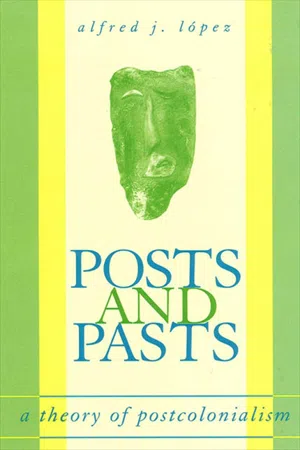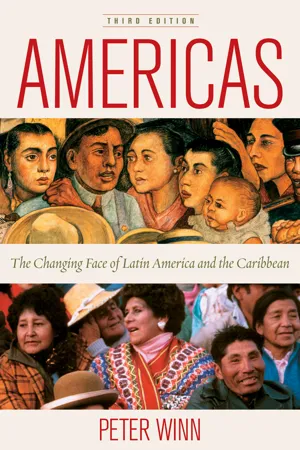Literature
Magical Realism
Magical realism is a literary genre that blends realistic settings and events with elements of the supernatural or magical. It often involves the coexistence of the ordinary and extraordinary, creating a sense of wonder and mystery within everyday life. This genre is characterized by its unique fusion of the mundane and the fantastical, challenging traditional notions of reality in storytelling.
Written by Perlego with AI-assistance
Related key terms
1 of 5
10 Key excerpts on "Magical Realism"
- eBook - PDF
Magical Realism and the Postcolonial Novel
Between Faith and Irreverence
- Christopher Warnes(Author)
- 2009(Publication Date)
- Palgrave Macmillan(Publisher)
How should one begin to pick a path through such cluttered terrain? Some critics have suggested that we ought to do away with the term altogether (González Echevarría Carpentier 108; Connell 95–110). The problem with such a suggestion, even if it were possible to implement, is that it ignores the fact that the tenacity of the term is due in large measure to its explanatory value. There is a growing corpus of literary works that draws upon the conventions of both realism and fantasy or folktale, yet does so in such a way that neither of these two realms is able to assert a greater claim to truth than the other. This capacity to resolve the tension between two discursive systems usually thought of as mutually exclusive must constitute the starting point for any inquiry into Magical Realism. A brief survey of canonical magical realist texts – Gabriel García Márquez’s One Hundred Years of Solitude, Isabel Allende’s The House of the Spirits, Laura Esquivel’s Like Water for Chocolate, Salman Rushdie’s Midnight’s Children and The Satanic Verses, Toni Morrison’s Beloved, Angela Carter’s Nights at the Circus, and Ben Okri’s The Famished Road, among others – will reveal that what these otherwise different texts all have in common is that each treats the supernatural as if it were a perfectly Introduction: Re-thinking Magical Realism 3 acceptable and understandable aspect of everyday life. As Rushdie says, talking of García Márquez, “impossible things happen constantly and quite plausibly, out in the open under the midday sun” (“García Márquez” 301–302). A basic definition of Magical Realism, then, sees it as a mode of narration that naturalises or normalises the supernatural; 3 that is to say, a mode in which real and fantastic, natural and supernatural, are coherently represented in a state of equivalence. On the level of the text neither has a greater claim to truth or referentiality. - eBook - PDF
- Graeme Harper(Author)
- 2002(Publication Date)
- Continuum(Publisher)
4 It is indeed appropriate that the idea of magic realism, which by its nature connotes a breaking down of barriers of time and space, should not be defined or limited by natural borders or cultural confines. In literary terms, magic realism is defined as narrative 'in which the recognizable realistic mingles with the unexpected and inexplicable'. 5 Although critics have been unable to agree on specific definitive elements of magic realism, Amaryll Chanady, in a 1985 study, provides a helpful listing of the traits which are commonly associated with the term: (1) an occurrence of the supernatural, or anything that is contrary to our conven-tional view of reality; 6 (2) a resolution of logical antinomy in the descrip-tion of events and situations; 7 and (3) an absence of obvious judgements about the veracity of the events and the authenticity of the world view expressed by characters in the text. 8 These characteristics enable us to identify magic realism in various works, but they do not constitute an agreed definition. The term, named by an oxymoron, is characteristically dual, and that duality leads to a complexity which seems to defy ultimate definition. Humour in a cultural context The duality inherent in magic realism also leads to humour in many magic realist works. Humour is not a criterion for the creation of magic realism; however, it does evolve as one of its more predominant character-istics. Humour and magic realism contain similar ingredients: the required duality in magic realism is an effective structure for 'incongruous' situ-ations or points of view; for example, the amalgamation of the central dualities of the natural and supernatural can be, by logic, 'absurd'. - Terence Chong(Author)
- 2008(Publication Date)
- ISEAS Publishing(Publisher)
According to Damian Grant, It is in the spirit of this realism that literature seeks to deliver itself up to the real world, to open its gates submissively to the horses of instruction; to ballast its giddy imagination with the weight of truth, and submit its forms, conventions, and consecrated attitudes to the purifying ravishment of fact. 1 380 381 Thai Magical Realism and Globalization 381 With firm roots in everyday reality, rather than in romantic, imaginary landscapes, literary realism became one of the major literary movements both in Europe and North America, signalling with pride that literature could stand alongside science in its capability to probe the complexities of human life and rationalize it in a narrative that comprises a series of causal events. By the end of the nineteenth century, literary circles began to realize the limits of realism, as it became obvious that the “reality” represented by literary realists is partial and that the roles of our consciousness in mediating day-to-day experience and in relating it were ignored. Like modernism, one of the main ideologies of Magical Realism is to expose the limits and drawbacks of realism. It critiques the way in which the realistic mode of story-telling adopted by realism has become hegemonic and oppressive. Its use of magical elements is political in that it wishes to expand the horizon of our consciousness; it aims to show that we do not experience things only in a realistic, that is, causalistic and objective, way, but our experience is also shaped by underprivileged elements such as the magical and the subjective. Before it became a trademark of Latin American narratives, Magical Realism emerged in Europe as a movement in German visual art to counter expressionism.- Richard Perez, Victoria A. Chevalier, Richard Perez, Victoria A. Chevalier(Authors)
- 2020(Publication Date)
- Palgrave Macmillan(Publisher)
science fiction , gothic novel, and fairy tale. … The recent increase in popularity of the term has made us feel less defensive about our decision to stick with it, but there is also the fact that any other term, such as “fiction of the marvelous,” or “fiction of conflicting realities,” would be both more cumbersome and less expressive. (1)This way of broadening the scope of Magical Realism, together with the lack of interest in its cultural, historical, and geopolitical determinations, permits the inclusion of texts by thirty-five writers (among them, Gogol, Tolstoy, Mann, Kafka, Mandelstam, Nabokov, Faulkner, Borges, Cheever, Reyes, Cortázar, Calvino, and Kundera), of which only Carpentier’s and Garcia Márquez’s texts could productively be counted as marvelous and magical realist. The affirmation of the difference of Magical Realism from the merely fantastic that would determine a much more rigorous anthology is both formal and historical. Ato Quayson provides the most convincing definition of the formal specificity of the rhetoric of Magical Realism, distinguishing it from the fantastic by describing the differential relation it establishes between the real and the extraordinary in terms of a “principle of equivalence”: “It is not that Magical Realism does not share elements of the fantastic with other genres, but that in confounding any simple or clear sense of spatial, ethical, or motivational hierarchies between the real and the fantastic, Magical Realism generates a scrupulous equivalence between the two domains” (“Fecundities” 728). This principle of equivalence, which recalls Chiampi’s idea of the denaturalization of the real and the naturalization of the marvelous cited at the beginning of the chapter, is not at work in fantasy, where the abnormal and the marvelous are never normalized. On the contrary, in texts like Kafka’s “Metamorphosis” and Robert Kroetsch’s What the Crow Said (and most of the novels and stories in Young and Holloman’s anthology), the pervasive “sense of the uncanny” permeates these narratives; the magical and fabulous remain strange, forever disrupting the real. However, the main hypothesis of this chapter is that a formal delimitation of Magical Realism is not enough to understand a genre that results from the complex interaction between aesthetic forms and their historicity because, as Zamora has argued, Magical Realism works by “erasing and redrawing the lines between fiction and history for particular political purposes” (“One Hundred Years ” 31). In other words, Magical Realism should not be considered an aesthetic form that can be forged anywhere, under any sociocultural conditions, but rather as a discourse that emerges from cultural formations marked by the perception of a lack (in the Lacanian sense) and the registration of emancipatory desires that dislocate and reconfigure hegemonic mappings of world literature . Indeed, it could be said that the most important contribution of the Latin American writers who reinvented the category and practice of Magical Realism was to imprint in the genre’s DNA an awareness of the indissoluble relation between aesthetic form and the specificity of the historical determinations that separate Magical Realism from other neighboring narrative discourses. As Christopher Warnes affirms in what may be the most rigorous study to date of the relation between Magical Realism and postcolonialism, it is in postcolonial conditions of enunciation “that Magical Realism fulfills its creative and critical potential to the fullest” (Magical Realism 28–29). Or to state it differently, between the 1940s and the first half of the 1980s, Magical Realism produced a critique (which in certain contexts might very well be called postcolonial) of the social and epistemological relations that give rise to hegemonic modes of symbolizing the real in the margins of global modernity- Ursula Kluwick(Author)
- 2013(Publication Date)
- Routledge(Publisher)
the truly American literature. (Leal 121–22)This passage already indicates another of Leal's legacies: wishing to prove magic realism authentically Latin American, he was concerned with establishing a clear distinction between magic realism and recent European trends of writing, such as surrealism, the fantastic, science fiction, psychological, and modernist literature. Once again, we find that the notion of harmony is implicitly used in order to distinguish magic realism from other forms of literature:Unlike superrealism, Magical Realism does not use dream motifs; neither does it distort reality or create imagined worlds, as writers of fantastic literature or science fiction do; nor does it emphasize psychological analysis of characters, since it doesn't try to find reasons for their actions or their inability to express themselves. Magical Realism is not an aesthetic movement either, as was modernism, which was interested in creating works dominated by a refined style; neither is it interested in the creation of complex structures per se.7 (Leal 121)The differences between magic realism and related genres such as the fantastic, fantasy literature, and science fiction have become a major concern in contemporary magic realist criticism, and efforts to define magic realism in opposition to these genres continue today. Of special importance here is the relation between magic realism and the fantastic, an issue which already attracted Leal's special attention, presumably since it allowed him to stress the natural quality of the “magic” in magic realism, and thus to implicitly link it with the marvellous real once again, despite citing Roh in the process:- eBook - PDF
Unraveling the Real
The Fantastic in Spanish-American Ficciones
- Cynthia Duncan(Author)
- 2010(Publication Date)
- Temple University Press(Publisher)
My purpose here is not to put an end to the debate, which would be an exercise in futility, but to look at the debate as emblematic of the fantastic itself. What is it about the genre that makes it so impossible to pin down? introduction / 3 One of the most pressing problems in any discussion of this imagi-nary vein of literature is what to call it. Do we highlight what it has in common, or how one type differs from another? Generic terms such as the supernatural or fantasy are somewhat misleading, since they have been appropriated by popular literature and film and sometimes refer to mass-marketed works that lack artistic merit. In contemporary criti-cism, fantasy is so broad a category that it is used to refer to science fic-tion, fairy tales, and ghost stories, along with other kinds of supernatu-ral and magical tales, and includes authors as widely diverse as Ursula LeGuinn, Stephen King, and J.K. Rowling. The uncanny, the marvelous, the absurd, the grotesque, and gothic horror, by contrast, are terms that have been coined in reference to specific works and writers and have such a clearly defined nature that their use is restricted to those par-ticular kinds of texts. 1 Magical Realism, as the name suggests, describes works that blend the magical with the real, but the precise meaning of the term and its boundaries are far from stable entities in the world of literary criticism. The marvelous-real ( lo real maravilloso ) intersects with Magical Realism so often and so intimately that it is impossible to discuss one without reference to the other. For some, they are the same thing; for others, they mark different paths in the evolution of literary theory. 2 The fantastic is acknowledged as a neighboring genre to all of these types of fiction, but it has perhaps been the most difficult concept to grasp. - eBook - PDF
Ordinary Enchantments
Magical Realism and the Remystification of Narrative
- Wendy B. Faris, Wendy Faris(Authors)
- 2004(Publication Date)
- Vanderbilt University Press(Publisher)
us Magical Realism’s generic complexity underlines in its particular way the eternal question of how to live fruitfully on the earth and in the air, in the body and the imagination, in the sensory and the ineffable, and how to express that experience. Different as they are, magical realist texts can be seen to embody those issues through their defocalized narrative mode. Postmodern Primitivists In its frequent though not constant fascination with pre-Enlightenment culture, nonscientific belief systems, and the narrative strategies associated with them, Magical Realism continues the tradition of modernist primitivism, our attraction to it resulting from the lure of foreign stories. 38 In that con-text, it raises some of the same questions that anthropologists, such as James Clifford, Sally Price, and others, have been asking about twentieth-century primitive art collections. 39 Although themes in Magical Realism contain many elements taken from indigenous cultures, Magical Realism also embodies a specifically narrative primitivism, irrespective of theme. 40 Because the mo-ments of magic exist within the narrative environment of realism, often dis-rupting both its spatial and its temporal conventions, they resemble artifacts from a different narrative culture, existing in something like the artificially created “ethnographic present” of anthropological museums. Here again, the question of cultural perspective arises because the belief systems of readers will differ. is description of the isolation of magical moments in magical Ordinary Enchantments realism applies more to Western readers than to non-Western ones. However, the strength of the realistic tradition that surrounds those moments means that even readers whose systems of belief cause them to accommodate such moments more easily than Western readers do enter the realistic tradition and implicitly subscribe to its conventions as they read these fictions. - eBook - PDF
The Exhaustion of Difference
The Politics of Latin American Cultural Studies
- Alberto Moreiras, Stanley Fish, Fredric Jameson, Stanley Fish, Fredric Jameson(Authors)
- 2001(Publication Date)
- Duke University Press Books(Publisher)
3 Irlemar Chiampi argues that Magical Realism is a writing of nondisjunction, in the sense that in it the nonsynchro-nous contradiction wants to find mediation, and therefore to dis-appear as contradiction ( O realismo 134). As a writing of nondisjunc-tion, following on the Cuban José Lezama Lima’s vision of Latin America as ‘‘incorporative protoplasm,’’ Magical Realism endorses the ideologeme that names Latin America as a site of transcultura-tion: not just a melting pot of races and cultures but also a region of radical assimilation where difference does not operate according to conventional, Aristotelian logic. The principle of the contradiction of opposites (be they opposite rationalities) or its corollary the tertio excluso is not operative for Latin American culture. Magical real-ism allows, as it were, for the simultaneous textualization of both A and non-A without scandal. The conciliation of the disjointed, ac-cording to Chiampi, is the textual effect in which Magical Realism comes to constitute itself as such. I will take a different position, perhaps opposite, to claim that Magical Realism is radically or pri-marily a writing of disjunction—regardless of what it itself purports to be. Magical Realism is a technical device within a larger and more en-compassing apparatus of transculturating representation. There are two main uses of the word transculturation: in a loosely anthro-pological sense, it is used to describe any kind of cultural mixing (some acquisition, some loss, and some creation are always ingredi-ents in it). And then it is used to refer to a critical concept, that is, an active, self-conscious cultural combination that is a tool for aes-thetic or critical production. In the sense developed by Angel Rama from Fernando Ortiz’ first use of the term, literary transculturation is a ‘‘revitalized examination of local traditions, which had become sclerotic, in order to find formulations that would allow for the ab-sorption of external influences. - eBook - PDF
Posts and Pasts
A Theory of Postcolonialism
- Alfred J. Lopez(Author)
- 2001(Publication Date)
- SUNY Press(Publisher)
We are ‘defamiliarized’ precisely because of the inadequacy of a given structure, a given signifier, to apprehend what is happening, or rather because the signifier does not correspond to anything that we would identify as an appropriate signified. Thus the term ‘Magical Realism’ represents the mark or space of a confrontation with a literature that would exceed and escape, which would be known to us only as ‘alterity,’ as other. Subsequent encounters with “fantastic” events in the text bring us no closer, and arguably distance us further: the epidemic of amnesia, Remedios the Beauty’s ascension, the various ghosts and specters that populate the pages of the novel—all events revealed or cleared (Lichtung) but not illuminated (Aufklarung), glimpsed but not under- stood, all signs of an encounter with otherness. A further glimpse of this arrival of an other, this unveiling that paradox- ically distances as it reveals, is Jose Arcadio Buendía’s “discovery” of ice. We are confronted with a description as mystifying as the object is to the character: Al ser destapado por el gigante, el cofre dejó escapar un aliento glacial. Dentro sólo había un enorme bloque transparente, con infinitas agujas in- ternas en las cuales se despedazaba en estrellas de colores la claridad del crepúsculo. 27 (100Y 74) Read outside the context of the novel this would seem to be an intelligi- ble enough, if not exactly straightforward, description of ice: “glacial exhalation . - eBook - PDF
Americas
The Changing Face of Latin America and the Caribbean
- Peter Winn(Author)
- 2006(Publication Date)
- University of California Press(Publisher)
His compatriot Edgardo Rodríguez Julía has used parody and pastiche in his apocryphal “chronicle” of a colonial slave revolt. This literary diversity, Sánchez argues, makes it “very simplistic to think that all of this continent writes under the label of Magical Realism.” A NATION OF ARTISTS “García Márquez is an African author, not a Spanish writer. He may be Colombian, but he comes from the Caribbean [coast],” claimed Derek The Magical and the Real / 439 Walcott, the celebrated West Indian poet, offering a minority view. “Magical Realism,” he added, “is just another term for the Caribbean imagination.” To Walcott, who joined García Márquez as a Nobel win-ner in 1992, this reflected the African storytelling traditions of the lands that border on this “cultural Sargasso Sea, a fertilizing lagoon of culture.” Walcott grew up with these griot traditions in his native St. Lucia, a small British island in the eastern Caribbean with a French colonial past. “All around me was a rich oral tradition of poetry,” he said. “St. Lucia has the comte, a story told in couplets in French Creole, and the ballad singer, who sings narrative songs with a lot of tragic wit, a favorite throughout the islands.” This tradition is clear in his prize-winning epic poem, Omeros, where the black St. Lucian fisherman, Achille, returns to Africa in a dream. There he meets his dead father and hears “the griot mutter-ing his prophetic song of sorrow that would be the past”—the story of his ancestors sold into slavery: We were the colour of shadows when we came down With tinkling leg-irons to join the chains of the sea, for the silver coins multiplying on the sold horizon, and these shadows are reprinted now on the white sand of antipodal coasts, your ashen ancestors from the Bight of Benin, from the margin of Guinea.
Index pages curate the most relevant extracts from our library of academic textbooks. They’ve been created using an in-house natural language model (NLM), each adding context and meaning to key research topics.




